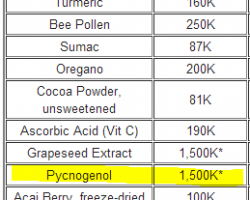
What Exactly IS a Free Radical and Why Should I Care?
What is a Free Radical?
We know this is super science-y (is that word? probably not!) but we want you to be know exactly what a free-radical is. We will be going way back to that high school chemistry class in this post. You may or may not remember that normally, bonds don’t split in a way that leaves a molecule with an odd, unpaired electron. But when weak bonds split, free radicals are formed. Free radicals are very unstable and react quickly with other compounds, trying to capture the needed electron to gain stability.
What is a Free Radical?
We know this is super science-y (is that word? probably not!) but we want you to be know exactly what a free-radical is. We will be going way back to that high school chemistry class in this post. You may or may not remember that normally, bonds don’t split in a way that leaves a molecule with an odd, unpaired electron. But when weak bonds split, free radicals are formed. Free radicals are very unstable and react quickly with other compounds, trying to capture the needed electron to gain stability. Generally, free radicals attack the nearest stable molecule, “stealing” its electron. When the “attacked” molecule loses its electron, it becomes a free radical itself, beginning a chain reaction. Once the process is started, it can cascade, finally resulting in the disruption of a living cell.
Some free radicals arise normally during metabolism. Sometimes the body’s immune system’s cells purposefully create them to neutralize viruses and bacteria. However, environmental factors such as pollution, radiation, cigarette smoke, UVA/UVB rays and herbicides can also spawn free radicals.
Why Should I Care?
Normally, the body can handle free radicals, but if antioxidants are unavailable, or if the free-radical production becomes excessive, damage can occur. And by damage we mean: cancers, break down of the immune system, illness and premature aging. Of particular importance is that free radical damage accumulates with age. Wow.
How Do I Combat Free Radicals?
Maybe you have heard the term “free-radical scavengers”? Orrrr…..maybe not – but they are important in “capturing” these rogue cells or “free radicals” so they cannot start that damaging chain reaction. Antioxidants are free-radical scavengers! They alone stop this process. You hear us talk about antioxidants often because they are imperative in protecting your skin from the visible signs of aging. This is not simply marketing jargon it truly is science. There are lots of antioxidants out there – you can get then through fresh fruits and vegetables as well as oral supplements. We opted to put them directly in our skin care products so they will be applied directly to the surface of the skin! Because there are so many out there….you must make sure you are getting a high quality one. You can actually check the effectiveness of your antioxidant on the ORAC scale. I’ve posted part of one here:

Note the antioxidant I have highlighted! Pycnogenol. Sound familiar? It should! It is the active ingredient in Theraderm’s OPC Reparative Gel. Can you see that number? 1.5 MILLION. Vitamin C has 190 THOUSAND. You can see that our chosen antioxidant is much MORE powerful than Vitamin C as a free-radical scavenger!
If you want optimal antioxidant protection from free radicals in order to have younger looking skin – you MUST use a product with Pycnogenol in it! And if you want additional protection – use OPC Reparative Gel right after Theraderm’s Fruit Acid Exfoliant. The Fruit Acid gently “lifts” the skin cells allowing the OPC to penetrate more deeply and more evenly. It’s a win-win!
So there is your chemistry lesson for the week! Protect yourself from free-radicals – purchase OPC Reparative Gel today!
